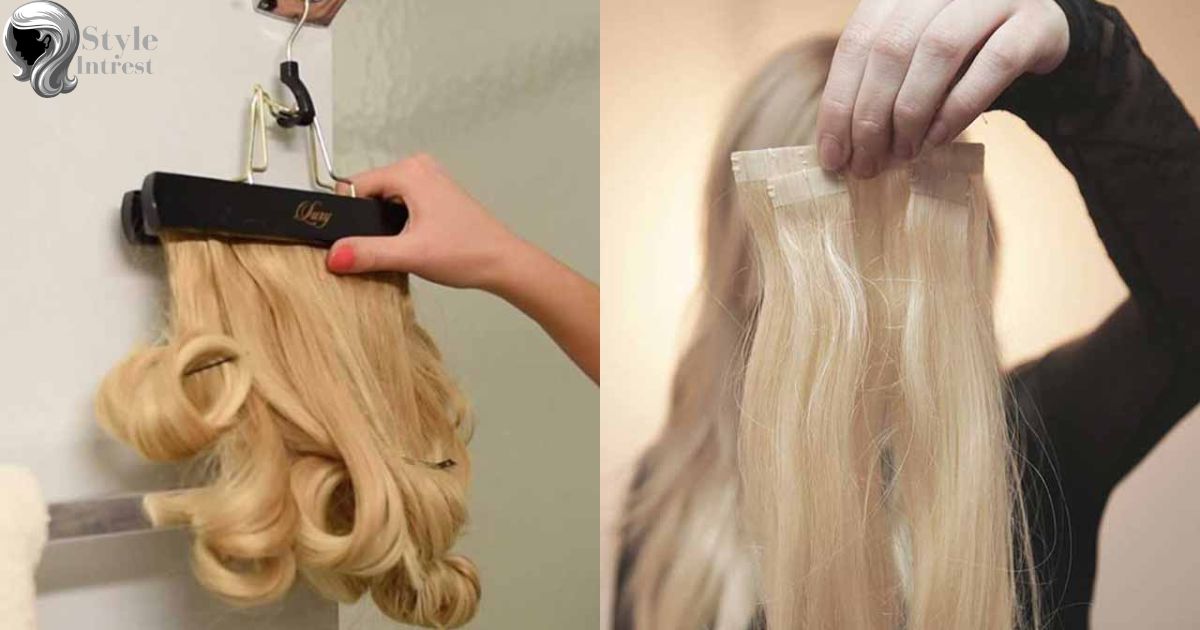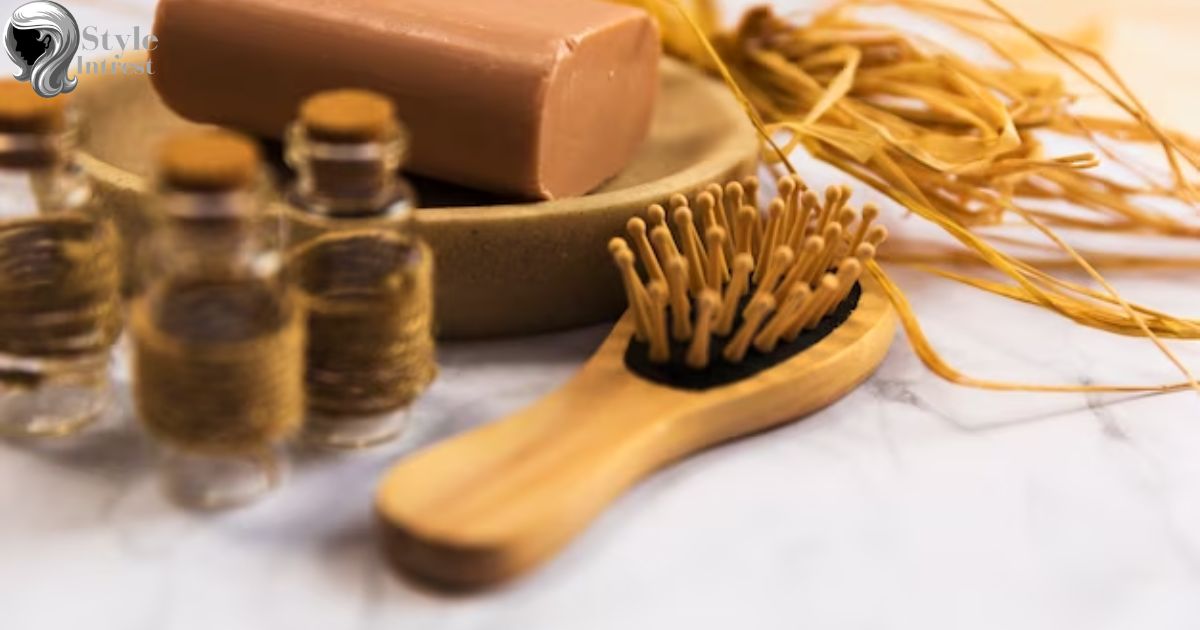Want to rock some gorgeous hair extensions? Well, honey, you gotta know how long your locks need to be. Don’t worry, we’ve got all the deets for you! In this article, we’ll spill the tea on the minimum length requirement for extensions. We’ll also break down the factors to consider and the ideal hair length for different extension methods. So, get ready to slay with some luscious tresses!
Key Takeaways
- Hair needs to be at least 6 inches long for effective application of extensions.
- Hair type and texture play a significant role in determining the ideal extension length.
- Different extension methods have different minimum hair length requirements.
- Partial extensions offer flexibility, easy maintenance, and a seamless blend with natural hair.
The Minimum Length Requirement for Extensions
Do you know what the minimum length requirement is for extensions? When it comes to hair extensions, the length of your natural hair plays a crucial role. The general rule of thumb is that your hair needs to be at least 6 inches long for extensions to be applied effectively. This minimum length allows the extensions to blend seamlessly with your natural hair, creating a more natural and cohesive look. Before getting extensions, it’s important to have a healthy hair care routine in place. Regularly moisturizing and conditioning your hair will ensure that it’s in the best possible condition to support extensions. Additionally, knowing various styling techniques will help you maintain and style your extensions properly. Now that you know the minimum length requirement, let’s dive into the factors to consider when determining extension length.
Factors to Consider When Determining Extension Length
When determining the length of extensions that will work best for you, there are several factors to consider. Firstly, your hair type and texture play a significant role in determining the ideal length. For example, fine and thin hair may require shorter extensions to avoid weighing down the natural hair. Secondly, your desired hairstyle also affects the extension length, as certain styles may require longer or shorter extensions for the desired effect. Lastly, the extension application method should be taken into account, as some methods require a certain length of natural hair to properly attach the extensions.
Hair Type and Texture
You should consider your hair type and texture before deciding on the length of extensions you want. Understanding your hair type is crucial for determining the right extensions that will blend seamlessly with your natural hair. If you have fine or thin hair, shorter extensions will work better as they will add volume without weighing your hair down. On the other hand, if you have thick or coarse hair, longer extensions can be a great option to achieve a fuller look. Additionally, your hair texture also plays a role in choosing the right length. For example, if you have curly or wavy hair, longer extensions may be needed to maintain a balanced and natural look. It is important to assess your hair type and texture to ensure that the length of your extensions complements your desired hairstyle.
Desired Hairstyle
To achieve your desired hairstyle, consider both the length and texture of your hair when determining the appropriate length for extensions. Hair extensions can be a great way to add length and volume to your hair, but it’s important to choose the right length that will blend seamlessly with your natural hair.
Here is a helpful table to guide you in choosing the right length for your extensions based on your desired hairstyle:
| Hairstyle Trend | Recommended Extension Length |
|---|---|
| Bob | 10-12 inches |
| Long Layers | 14-16 inches |
| Mermaid Waves | 18-20 inches |
| Updo | 10-12 inches |
| Ponytail | 14-16 inches |
Extension Application Method
If you’re considering getting extensions, one factor to consider is the number of extensions you’ll need for the desired length. The best extension brands offer a variety of options to suit your needs. When it comes to the cost of hair extensions, it’s important to remember that the quality of the hair and the application method can affect the price. Here are two sub-lists to help you understand the emotional aspects of this decision:
Benefits of Longer Hair with Extensions:
- Increased confidence and self-esteem
- Ability to experiment with different hairstyles
Challenges of Longer Hair with Extensions:
- Maintenance and care requirements
- Cost of regular salon visits
Now, let’s transition into discussing the ideal hair length for different extension methods.
Ideal Hair Length for Different Extension Methods
Got short hair? Find out the ideal length for different extension methods. When it comes to hair extensions, the length of your natural hair plays a crucial role in determining the type of extensions you can get. If your hair is too short, certain extension methods may not be suitable for you. For example, tape-in extensions generally require a minimum hair length of 4-6 inches, while fusion or micro-bead extensions typically require 6-8 inches of hair. However, if you have longer hair, you have more options available to you, such as sew-in or clip-in extensions. Remember, it’s always best to consult with a professional stylist who can assess your hair length and recommend the ideal extension method for you. Now that you know about different extension methods, let’s move on to the next section and learn how to measure your hair for extensions.
How to Measure Your Hair for Extensions
First, grab a measuring tape and measure the length of your hair from the root to the ends. This step is crucial to determine the right length of hair extensions for you. Here are some measuring techniques to help you achieve the perfect extensions:
- Start by parting your hair down the middle and divide it into two sections.
- Take the measuring tape and place it at the root of one section. Gently stretch it down to the ends, ensuring it follows the natural curve of your head.
- Repeat the process for the other section and compare the measurements.
Hair extension care is essential to maintain their durability and natural appearance. Here are some tips to keep your extensions looking fabulous:
- Use a gentle sulfate-free shampoo and conditioner specifically formulated for hair extensions.
- Brush your extensions with a wide-toothed comb to avoid tangling and breakage.
Tips for Growing Your Hair to the Required Length
To grow your hair to the required length for extensions, there are a few tips you can follow. First, focus on natural hair growth methods such as eating a balanced diet, staying hydrated, and minimizing heat styling. Additionally, make sure to maintain the health of your hair by using gentle products, regularly trimming split ends, and avoiding tight hairstyles that can cause breakage. By incorporating these tips into your hair care routine, you can help your hair reach the desired length for extensions.
Natural Hair Growth Methods
If you’re looking for natural hair growth methods, try incorporating essential oils into your hair care routine. Essential oils are derived from plants and have been used for centuries to promote hair growth and improve hair health. Here are some essential oils that can help stimulate hair growth:
- Lavender oil: Known for its calming scent, lavender oil can also promote hair growth by increasing blood circulation to the scalp.
- Rosemary oil: This oil has been shown to stimulate hair follicles and promote hair growth.
- Peppermint oil: Peppermint oil has a cooling effect on the scalp and can help improve blood flow, which in turn promotes hair growth.
By incorporating these essential oils into your hair care routine, you can naturally enhance hair growth and improve the overall health of your hair. So go ahead and give it a try!
Now that you know some natural hair growth methods, let’s discuss how to maintain the health of your hair.
Maintaining Hair Health
Are you struggling with maintaining the health of your hair as you grow it to the required length for extensions? It can be frustrating when you’re trying to achieve long, luscious locks, but your hair seems to have other plans. Understanding the hair growth stages and implementing a proper hair care routine is essential for promoting healthy hair growth. The hair growth stages consist of anagen, catagen, and telogen. During the anagen phase, the hair actively grows, while the catagen phase is a transitional period, and the telogen phase is a resting phase. To maintain the health of your hair, you should follow a hair care routine that includes regular washing with a gentle shampoo, conditioning, and avoiding excessive heat styling. Additionally, incorporating a balanced diet and staying hydrated will contribute to overall hair health. Remember, with the right care and patience, you can achieve the length necessary for extensions and enjoy beautiful, healthy hair.
Alternative Options for Shorter Hair: Partial Extensions and Blending Techniques
You could consider trying partial extensions or blending techniques to achieve a shorter hair look. These options offer flexibility and can help you achieve the desired length without the commitment of full extensions. Here are some reasons why you might want to explore these alternatives:
- They can give you a quick and easy transformation, allowing you to switch up your hairstyle whenever you want.
- They offer a seamless blend with your natural hair, creating a natural and effortless look.
- You can experiment with different styles and textures without compromising the health of your own hair.
- Maintenance for partial extensions is relatively easier compared to full extensions, saving you time and effort.
- There are various hair care products available specifically for blending techniques, ensuring your hair remains healthy and nourished.
Frequently Asked Questions
Can I Get Extensions if My Hair Is Shoulder-Length or Shorter?
If your hair is shoulder-length or shorter, you may consider temporary alternatives to extensions like clip-in or tape-in hairpieces. However, make sure to follow proper haircare tips to maintain the health and integrity of your natural hair.
What if My Hair Is Too Thin or Fine for Extensions?
If your hair is too thin or fine for extensions, there are alternatives to consider. For instance, you could try volumizing products, such as root lifters or thickening sprays, to add fullness and body to your hair.
Is There a Maximum Length My Hair Can Be for Extensions?
The best hair length for extensions depends on the method used. Generally, there isn’t a maximum hair length for extensions, as they can be tailored to blend seamlessly with your natural hair, regardless of length.
How Can I Ensure That My Hair Is Healthy and Strong Enough for Extensions?
To ensure your hair is healthy and strong enough for extensions, take extreme measures to prevent damage. Choose the right extension method that suits your hair type, and follow a detailed and informative hair care routine.
Are There Any Temporary Options for Adding Length to My Hair Without Extensions?
If you’re looking for temporary alternatives to add length to your hair without extensions, there are DIY options available. You can try clip-in hairpieces, hair wefts, or even experiment with hairstyles that create the illusion of longer hair.
Conclusion
To achieve the desired length for extensions, it is essential to consider various factors, such as the minimum requirement, your hair’s natural length, and the extension method you choose. By measuring your hair accurately and following tips for hair growth, you can achieve the length needed for extensions. If your hair falls short, partial extensions or blending techniques can also provide a beautiful and seamless look. Just remember, like a painter adding brushstrokes to a canvas, extensions can transform your hair into a masterpiece.









